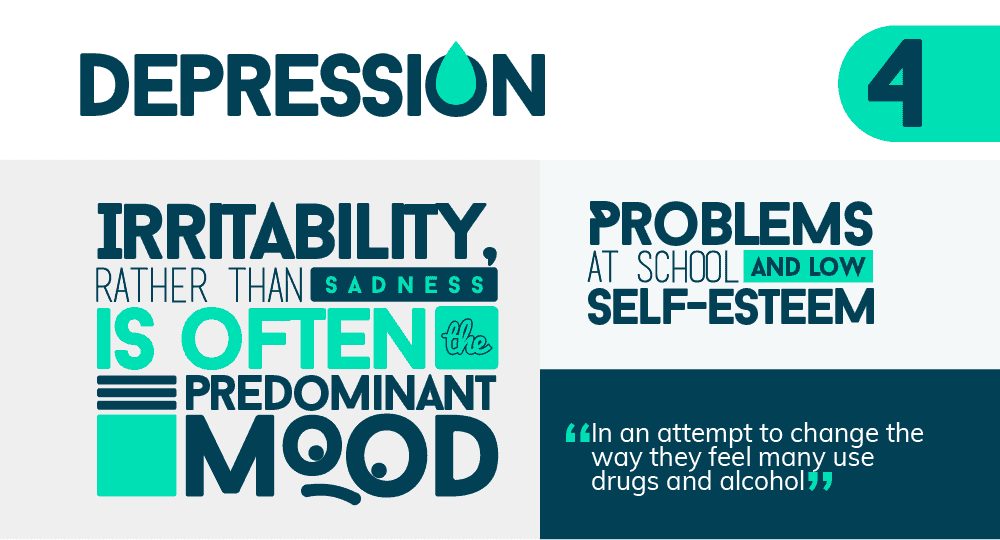“Addiction is not the only danger. Abusing drugs during adolescence can interfere with meeting crucial social and developmental milestones and also compromise cognitive development. For example, heavy marijuana use in the teen years may cause a loss of several IQ points that are not regained even if users later quit in adulthood.” ~ Dr. Nora Volkow, M.D., the Director of the National Institute on Drug Abuse Experts agree that the best way to combat drug addiction is to intervene before behaviors actually become a problem. Now, there is a new prevention program being tested in Canada, Australia, and Europe that may help pinpoint which children are at the highest risk for substance abuse.  The program, Preventure, was developed by a Professor of Psychiatry at the University of Montréal, Patricia Conrod. Early trials of Professor Conrod’s program show that an adolescent’s temperament can be a major factor in their risk of drug abuse, and by performing personality tests, up to 90% of the children at greatest risk can be identified. Armed with this information, parents and health care professionals can intervene proactively.
The program, Preventure, was developed by a Professor of Psychiatry at the University of Montréal, Patricia Conrod. Early trials of Professor Conrod’s program show that an adolescent’s temperament can be a major factor in their risk of drug abuse, and by performing personality tests, up to 90% of the children at greatest risk can be identified. Armed with this information, parents and health care professionals can intervene proactively.
The Four Personality Traits that Predict Risk of Addiction
Most of the personality traits highlighted by the Preventure program are associated with mental health issues – a major risk factor for substance abuse: 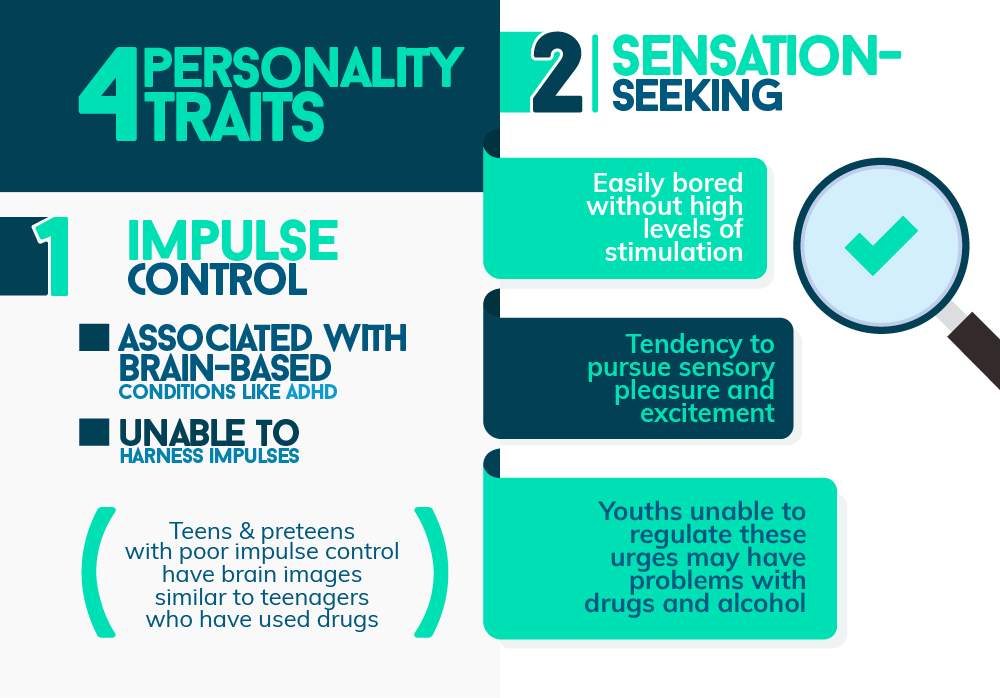
- Impulse Control: Researchers at the University of Vermont performed a study that included nearly 1900 14-year-olds, and determined that adolescents with poor impulse control have brain images that are similar to teenagers who have already experimented with drugs.
- Sensation-Seeking: During early-to-mid-adolescence, teenagers will naturally experience a rapid increase in sensation-seeking urges. A study published in Alcoholism: Clinical and Experimental Research found that high-risk youths – especially those with poor impulse control – are less able to regulate those urges, which can in turn lead to experimentation and problems with drug and alcohol use.
- Anxiety Sensitivity: Also referred to as the “fear of fear”, anxiety sensitivity is when an individual is overly-aware of and afraid of the symptoms of anxiety. While everyone, of course, wants to be safe, a person who suffers from anxiety sensitivity places even more importance on their safety than does the average person.
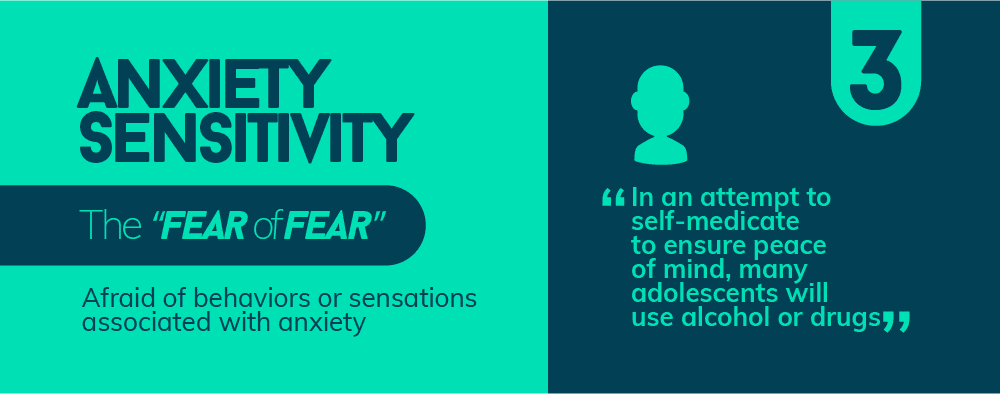 This means that anxiety sensitivity can make a person more prone to irrational fears, panic disorder, post-traumatic stress, and panic attacks. In an attempt to self-medicate as a means to ensure their own peace of mind, many adolescents will use alcohol or drugs.
This means that anxiety sensitivity can make a person more prone to irrational fears, panic disorder, post-traumatic stress, and panic attacks. In an attempt to self-medicate as a means to ensure their own peace of mind, many adolescents will use alcohol or drugs.
- Depression: As is the case with anxiety, many teenagers who suffer from depression will attempt to change the way they feel by using intoxicating substances. Male addicts/alcoholics have a rate of depression that is TRIPLE than that of the general public, while females have a rate that is QUADRUPLE the norm.
Why Prevention and Early Intervention Is So Important
Despite the efforts of the Drug Abuse Resistance Education program – better known as D.A.R.E. – substance abuse is still a major problem among adolescents:
- Among teenagers, alcohol is the most-frequently-abused substance, followed by marijuana
- Within the past month, 35% of high school seniors self-report drinking alcohol
- By the time they graduate high school, 70% of high school students will have tried alcohol
- 21% have used marijuana within the past month
- 39% of high school students have used marijuana at some point in their life
- Within the past two weeks, 1 out of every 6 high school seniors have engaged in “binge-drinking”
- Within the past 30 days, 20% of teenagers have ridden with a driver who had been drinking
- By the time they have reached the 12th grade, approximately 50% of teenagers have abused an illicit drug at least once
- 1 out of every 14 high school students have used an intoxicating inhalant
- Among all high school students, 5% have abused cocaine or prescription opioids, and another 1% have used amphetamines
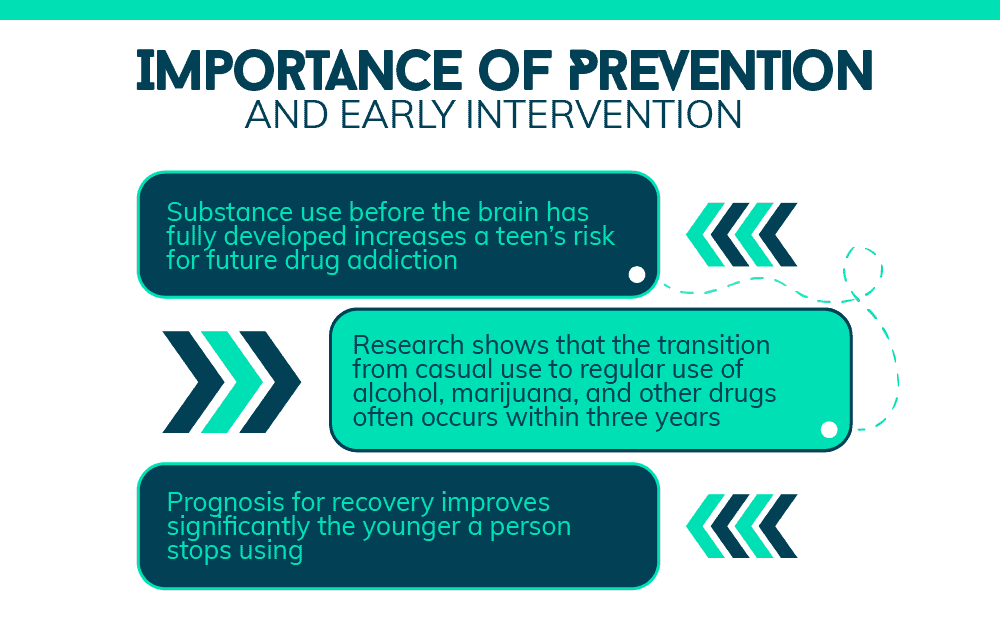 This substance abuse is particularly worrisome, because the adolescent brain is still developing, and the use of drugs or alcohol can have long-lasting effects. The earlier substance experimentation is initiated, the higher the risk of eventual addiction:
This substance abuse is particularly worrisome, because the adolescent brain is still developing, and the use of drugs or alcohol can have long-lasting effects. The earlier substance experimentation is initiated, the higher the risk of eventual addiction:
- Among people who start drinking by age 14, over 15% will eventually become dependent upon or abuse alcohol, compared to just 2% of those who wait until they’re 21 or older
- 25% of individuals who abuse prescription medications at age 13 or younger will suffer from a substance abuse disorder at some point in their lives
- 13% of all substance abusers started using marijuana at age 14 or younger
What Does All of This Mean?
In some ways, the teenage brain is much like a car that has a fully-functioning gas pedal – the brain’s reward system – but inadequate brakes – the prefrontal cortex that is responsible for impulse control and decision-making. That part of the brain does not typically mature until the person reaches their mid-20’s. 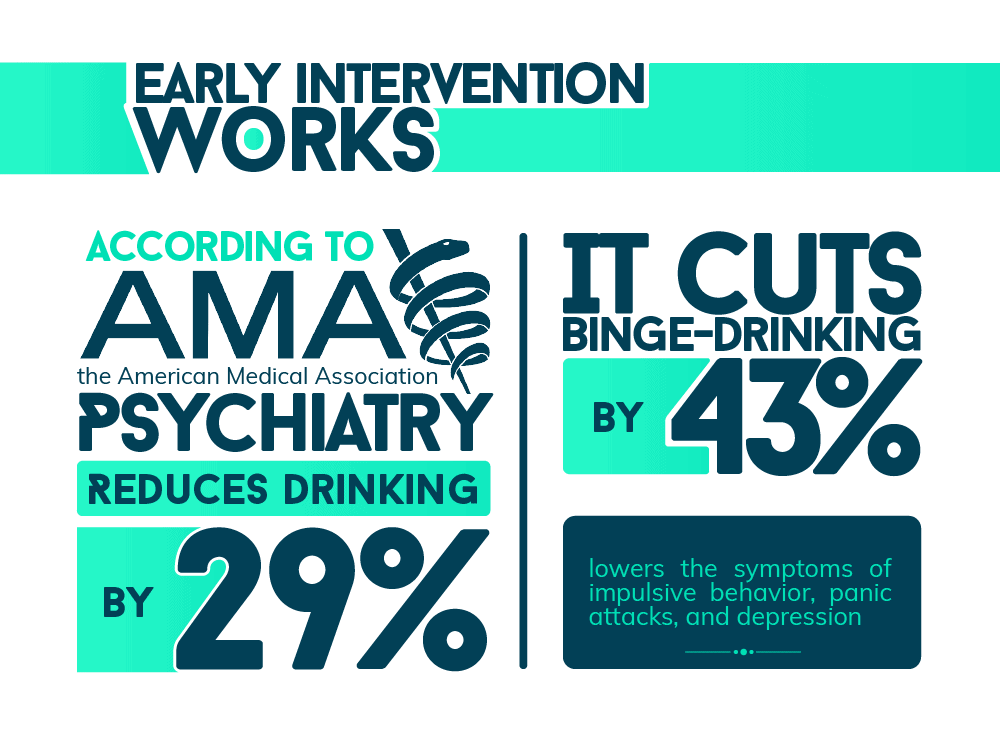 Early intervention WORKS – according to a 2013 study published in the Journal of the American Medical Association – Psychiatry, participation in the Preventure program:
Early intervention WORKS – according to a 2013 study published in the Journal of the American Medical Association – Psychiatry, participation in the Preventure program:
- Reduces drinking by 29%
- Cuts binge-drinking by 43%
- Lessens the symptoms of impulsive behavior, panic attacks, and depression
Learning how to recognize and manage the personality traits that put teenagers at increased risk could prove to help them change the course of their lives before the disease of addiction takes hold.
What Did you Think About This Blog?
Give it a Rating!
Full Infographic:
 https://www.scientificamerican.com/article/why-just-say-no-doesnt-work/ https://www.hhs.gov/ash/oah/adolescent-health-topics/substance-abuse/home.html https://www.hhs.gov/ash/oah/adolescent-health-topics/substance-abuse/fact-sheets/state.html?s=washington https://www.nytimes.com/2016/10/04/well/family/the-4-traits-that-put-kids-at-risk-for-addiction.html?_r=0 https://www.ncbi.nlm.nih.gov/pubmed/22974180 https://www.sciencedirect.com/science/article/pii/S0010440X96900218 https://www.apa.org/pubs/books/4317124.aspx https://www.drugabuse.gov/sites/default/files/podata_1_17_14.pdf https://www.nature.com/neuro/journal/v15/n6/full/nn.3092.html https://www.drugfree.org/news-service/poor-impulse-control-may-be-pre-wired-in-some-teens/ https://www.scientificamerican.com/article/what-is-anxiety-sensitivity-and-do-i-have-it/ https://abcnews.go.com/Health/DepressionScreening/story?id=4355978 https://www.ncbi.nlm.nih.gov/pubmed/23344135
https://www.scientificamerican.com/article/why-just-say-no-doesnt-work/ https://www.hhs.gov/ash/oah/adolescent-health-topics/substance-abuse/home.html https://www.hhs.gov/ash/oah/adolescent-health-topics/substance-abuse/fact-sheets/state.html?s=washington https://www.nytimes.com/2016/10/04/well/family/the-4-traits-that-put-kids-at-risk-for-addiction.html?_r=0 https://www.ncbi.nlm.nih.gov/pubmed/22974180 https://www.sciencedirect.com/science/article/pii/S0010440X96900218 https://www.apa.org/pubs/books/4317124.aspx https://www.drugabuse.gov/sites/default/files/podata_1_17_14.pdf https://www.nature.com/neuro/journal/v15/n6/full/nn.3092.html https://www.drugfree.org/news-service/poor-impulse-control-may-be-pre-wired-in-some-teens/ https://www.scientificamerican.com/article/what-is-anxiety-sensitivity-and-do-i-have-it/ https://abcnews.go.com/Health/DepressionScreening/story?id=4355978 https://www.ncbi.nlm.nih.gov/pubmed/23344135

